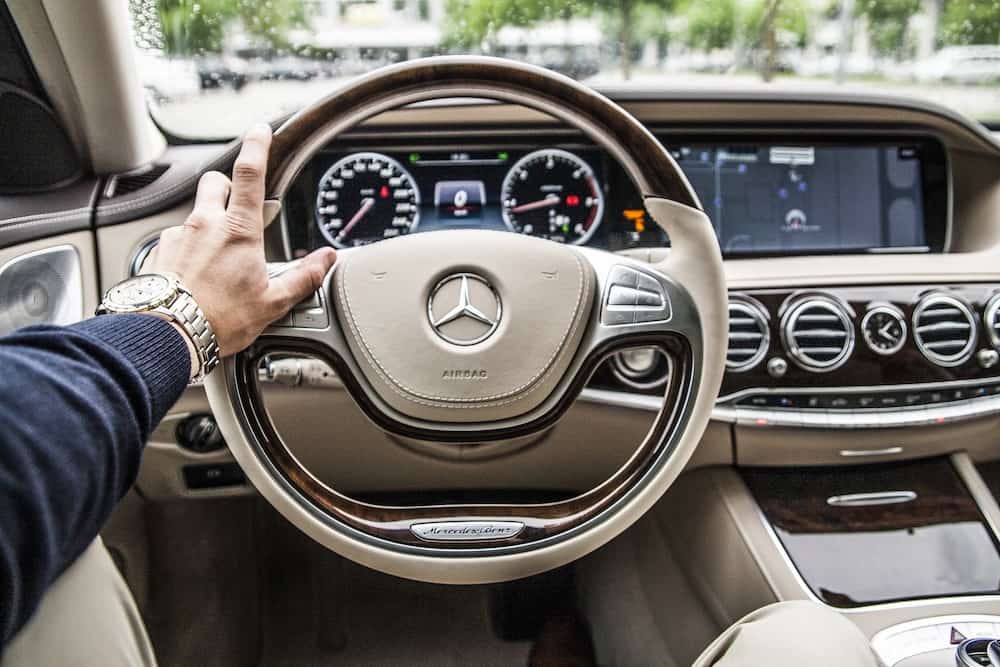You thought getting your license was going to be the end of your adventure, but the truth is that now you begin on the next one. Before you actually drive a car, there are still a few things to remember when you sit behind the wheel for the first time.
Take a deep breath, grab your keys, and read on to find out ten things to remember when you drive for the first time.
1. Keep your safe distance
Ask any experienced driver what their biggest worry is when driving and they will tell you it is the drivers around them. You can do everything perfectly and be the victim of someone else’s careless mistake. This is why you should always leave a safe distance between you and the cars around you, especially when you drive for the first time.
Don’t be afraid to get away from drivers making you nervous; pull over and get out of their way. If someone is tailgating you or coming into your lane, chances are they are impaired or distracted (or just a jerk), and your safest course is to just let them go.
2. Leave the phone in the glove box
As someone getting ready to drive for the first time, you will probably want the added confidence of knowing your phone is with you, so bring it along. As far as driving goes, however, the phone has no place in your hand or on your dash. Put your phone in the glovebox or close it up in the console and turn on the driving alert so no one bothers you or tempts you to reach for your device.
If you need to use it for driving directions, turn on the audio and flip the phone over on the passenger seat, out of your reach.
3. Leave your friends at the curb
When you drive for the first time, it’s only natural to want your friends right there with you. Your nerves may not be ready for a car full of passengers yet, and chances are, your friends will prove to be far too distracting to bring along.
4. Don’t drive at night, or at dusk or dawn
When you drive for the first time, make sure it is on a nice day where you aren’t facing the glares and disorientation that can come from driving at night, at sunset, or at sunrise. Those headlights in your eyes, combined with the diminished ability to see and the glare in your mirrors, is enough to make an experienced driver turn back for home. Don’t push it until you are comfortable.
5. Make your car adjustments before you pull out of the driveway
You’re already going to be nervous, so you might as well be comfortable. Adjust the seat, adjust the mirrors, and tune the radio to whatever channel you want before putting the car in drive and pulling out of the driveway. Once you’re on the road, it’s hard to find a place convenient to pull out of traffic to make adjustments, and some things, like the seats or steering wheel adjustments, cannot be fixed while you are on the road.
6. Dress comfortably
The last thing you need is to have your clothes tugging on you or to be too hot or too cold when you drive for the first time. Find a comfortable outfit, including flats and loose- fitting clothing, for your drive. It’s important for your confidence behind the wheel that you are completely comfortable when driving.
7. Don’t be blinded by your blind spots
When you are changing lanes or even just monitoring traffic around you as you drive, don’t forget the blind spot in your mirror. There is always a small segment of space that you can’t see when looking in the mirrors, and it’s best to treat this area as if there is always a car in it. This is why you must physically turn your head left or right before changing lanes.
Don’t forget that every car and truck on the road has a blind spot. Try to make it a habit to be clear of potential blind spots in the surrounding vehicles, too, especially busses, tractor trailers, or other big vehicles.
8. Understand your car
You can’t just drive for the first time and have no idea of where your hazards are, how to use your windshield wipers, or where the headlight switch is. Take a minute to locate important features of the car before heading out on the road. It’s also important to understand the limits of your car; your four-cylinder economy car may not be as reliable for merging onto a busy, fast freeway as you would hope.
You will learn to drive your car in any traffic and in any conditions, but you need to learn the limitations of your car before you face them.
9. Consider a defensive driving course
Before you drive for the first time on your own, you may look at taking a defensive driving course. These classes focus on safe driving techniques designed to help you make wise choices behind the wheel. An added plus? Your car insurance policy may give you a pretty hefty discount for completing a defensive driving class.
10. If you must pass someone, use caution
Passing a vehicle isn’t something you should be doing the first time you drive a car, but you shouldn’t be overly afraid to do it if you need to. Drivers of slow-moving vehicles such as mail delivery trucks or heavy equipment may wave you around them.
Don’t go until you are certain no one else is coming toward you in the other lane; a wave isn’t a green light to go, it’s an invitation to go around when it’s safe to do so. Once you can see the car’s entire front end in the mirror after you’ve passed, it’s safe to pull back into the lane. Use common sense and common courtesy equally; just because you want to pass doesn’t mean others have to let you do it.
When you drive for the first time, it’s important to relax with a few deep breaths and just let yourself enjoy the experience. Remember that millions of people have been exactly where you are in the driving journey and have overcome the new driver blues just fine.



